Speaking to the rangers, we are told to be careful, and that optimal conditions for summiting Cradle Mountain today may be scarce. Grateful for the warning, my partner Aurore and I set off – optimistic but cautious for the journey ahead.
Nestled within the central highland region of Tasmania, Cradle Mountain-Lake St Clair National Park wastes no time captivating one with its awesome presence. Long periods of glaciation carved out deep valleys into the park. The still lakes that now sit at the bottom of these valleys stand in contrast to the snow-covered valley walls and mountain peaks that surround them. This diverse topography is matched by rich biodiversity – both fauna and flora – that inhabits this natural sanctuary. Thanks to ongoing conservation efforts, the park has remained an almost pristine remnant of the Tasmanian wilderness that beckons even the timidest of travellers to adventure.
Entering the park in the early hours of the morning, Aurore and I are greeted by Dove Lake. Small tussocks of native grasses coupled with low-lying shrubs soften the landscape and allow for a clear view of the entire valley. As the morning sun gently warms the rising rocky walls that encapsulate the lake, the serene view belies the hike ahead. Shrouded in clouds, the mountain seems to guard its secrets a while longer and, by doing so, calls us all the more.
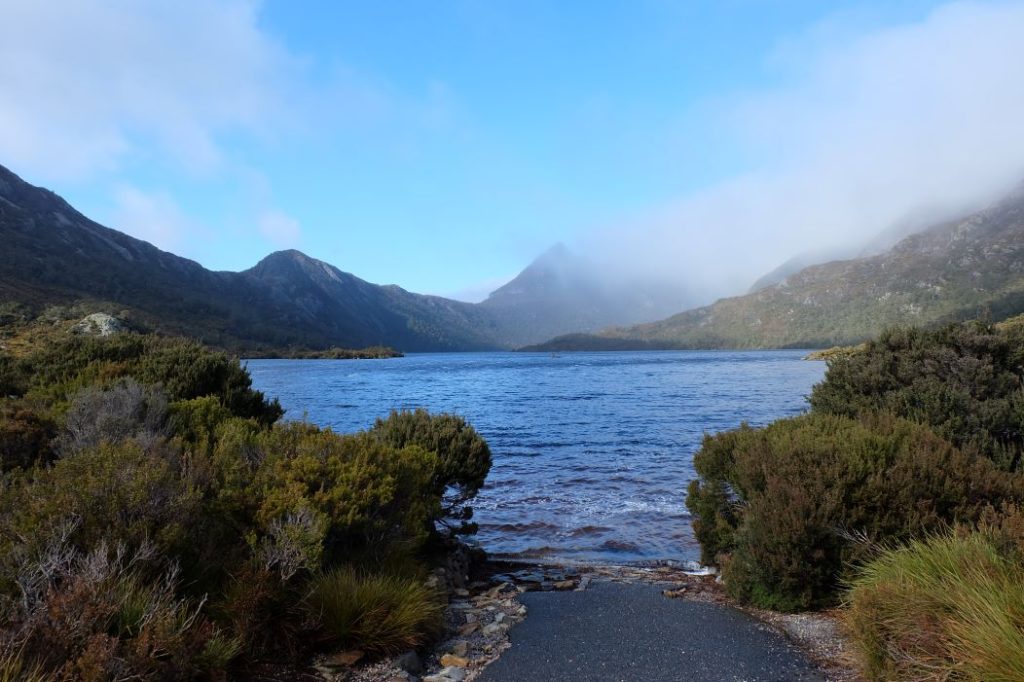
Taking the path that winds off to the right, we begin the walk to the base of the mountain. Small King Billy Pine, Celery Pine, Banksia, and varieties of Eucalypts accompany us on either side. While the area is known to play host to a rich diversity of fauna, including echidnas, quolls and pademelons, we do not encounter any wildlife except for the avian variety. We remind ourselves, though, that this would have been a luxury, and that we are still so fortunate to be in a place such as this. The resounding silence, only broken by the sounds of the birds chirping as they flit from tree to tree, affords us the opportunity to internalise the peaceful ambience that is so rarely found in our day-to-day lives. Had it not been for the raised path constructed to protect the local flora from foot-traffic, one could be forgiven for believing they had left the modern world behind.
Further along, we traverse a small footbridge that rests over a stream; water glides seamlessly off the smooth rock face that it has already begun to cut a tiny groove into. Perhaps it is the spring weather that we encounter, but like a close companion, water seems to accompany us at every stage of our hike. Along with the numerous streams, small ponds litter the landscape along the walk, and every staircase is flanked by a constant trickle of water from snow-melt, eroding the earth either side. As we continue to ascend to the base of the mountain, the water does not leave our sight, but changes form with the altitude; patches of snow slowly appear first on the far-off hills, and eventually onto the path itself.
But it is not just the water that transforms with the gradient of the hike – the flora too is sensitive to the changing temperature and altitude. Tall vegetation gives way to smaller highland plants. As we surpass the treeline, the various pines and eucalypts that are left behind take with them our sense of refuge. While the open plains we now encounter have taken away all means of shelter, in their place they offer vistas of the valleys below. We choose to take full advantage of this and, upon finding natural seats carved into the rock via weathering, enjoy a small snack whilst admiring the view of Dove Lake below.
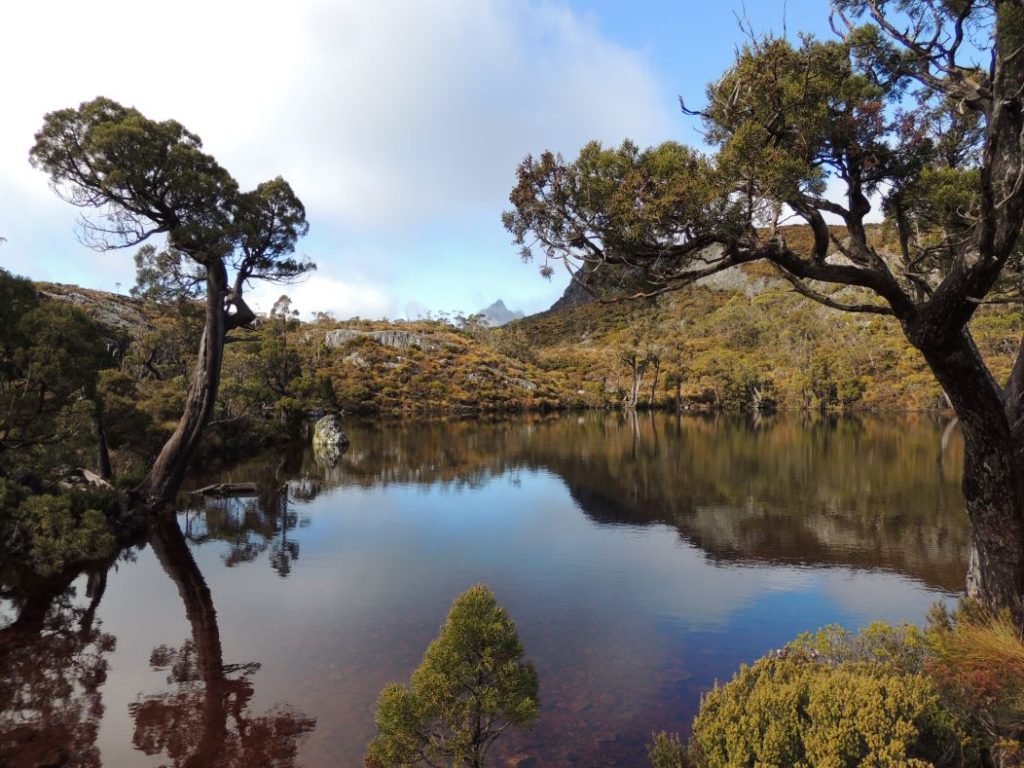
Despite being exposed to the elements and the frigid early spring temperatures, by the time we reach the shack at the base of Cradle Mountain there is no longer a need for heavier garments. Today’s hike has warmed our core temperature enough for it to be T-shirt weather. Basking on the shack’s steps, we eat another small snack and quench our thirst while admiring the mountain that has finally emerged from behind the sheath of clouds. Now in full view and illuminated in the midday sun, Cradle Mountain exudes a mythical aura. I am grateful to have been presented with such perfect conditions for the ascent.
Signs indicate it is a two-to-three-hour round trip to the peak and back; naively we agree we’ll be down in 1.5 hours. The greenery that engulfs sections of the hillside gives the illusion the mountain is smaller than it really is. The path’s gentle flat beginning soon steepens and, bit-by-bit, the boundary between the vegetation and rocky outcrops of the mountainside blur, before the characteristic dolerite pillars of Cradle Mountain become the prominent feature of the path. This said ‘path’, of course, has now vanished and we find ourselves clambering over large boulders as we chase metal poles that act as guideposts across this new terrain. But this is what we came here for. The rugged features of this climb only serve to enrich our experience all the more; the wildness forces us to be present. As we choose out own routes to the next pole, this need to be in the moment helps us to take in the spectrum of views that each new path offers.
We take a small pause at the first ridge top before continuing. After this point, there is a descent into a small chasm that must be crossed to get to the true summit. Here we discover that we are not alone, and we encounter another traveller within a narrow pass. With a small exchange of pleasantries, he warns us that the hardest parts lie ahead, but that the end goal is worth all the effort. At this time of year, thick snow covers the cradle floor that we now step out into and, to avoid injury, we tentatively tread in the footprints left behind by earlier visitors. Taking measured steps, I can hear the distinct sound of clumps of snow falling as the sun, now sitting directly overhead, slowly melts the thinner layers. The holes on either side of the path signal that there isn’t a set path underneath this white snow that now crunches underfoot; a wrongly placed step could result in an abrupt halt to any ambitions of reaching the top. Yet, this is only a temporary consideration. To our left we witness an incredible view over the parklands below, and we realise that this is only a glimpse of what awaits us at the end.
After trudging through the snowy canyon, we abruptly hit the final obstacle in between us and the summit – a sharp climb up a series of rocks covered in ice and snow. Fortunately, a chain has been attached to several rocks to assist travellers in surmounting this last challenge, but depending on where the ice lies, it isn’t necessarily the safest path. As we carefully swap between climbing the boulders and using the chain to guide us, I find myself pondering for a moment what it is that entices us to undertake such daring feats? In the moment, with adrenaline pumping from the fear of falling combined with the fatigue that has begun to set in, I cannot fathom an answer.
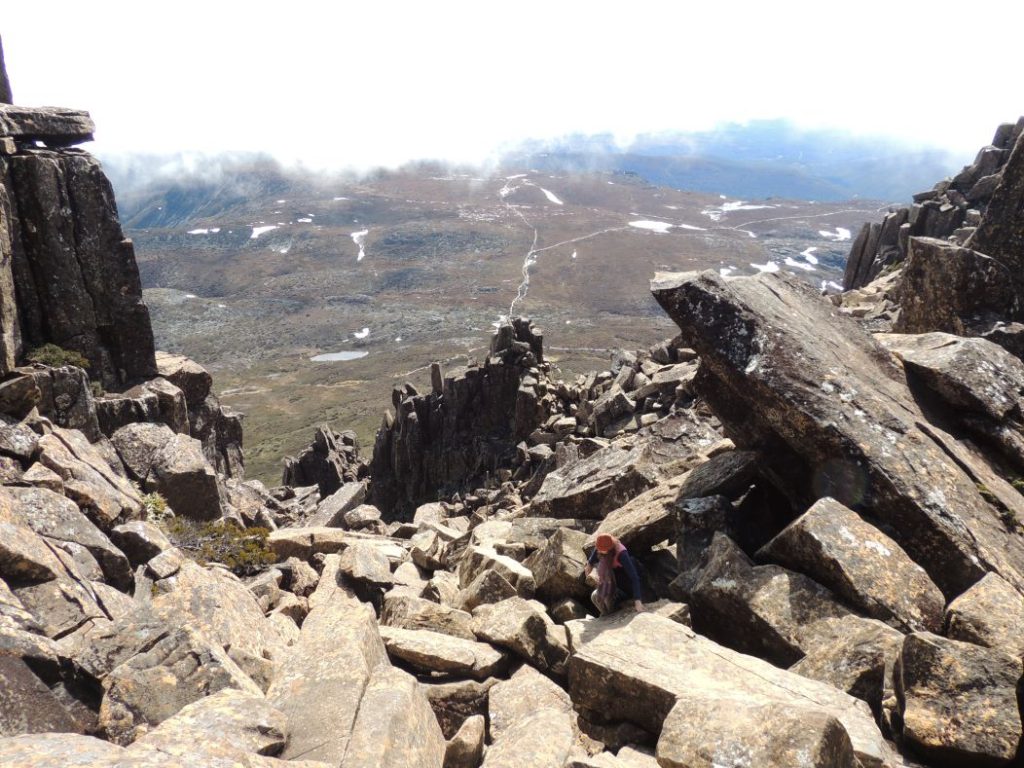
However, upon reaching the summit marker I am overwhelmed both by the panoramic views and from having overcome the mental and physical challenges to get to this point. Sitting calmly, we observe what seems like the endless expanse of the park and enjoy the modest lunch that we had packed. Low-lying clouds drift by and remind us that we are 1 545 metres above sea level now. Amused by the fact that we quite literally have our feet on the ground and our heads in the clouds, we allow ourselves a few moments longer to appreciate this unique place before attempting the return journey.
What is it that entices us to undertake such daring feats? In the moment, with adrenaline pumping from the fear of falling combined with the fatigue that has begun to set in, I cannot fathom an answer.
Reflecting on this hike, it remains one of my fondest memories of trekking in nature. Had someone asked me at the time, I wouldn’t have supposed that undertaking the Cradle Mountain zenith path would have left such a long-lasting impression on me, even despite the ecstatic high I felt afterwards. Now, years later, I’ve had time to consider this point further, and I believe that there are two major reasons.
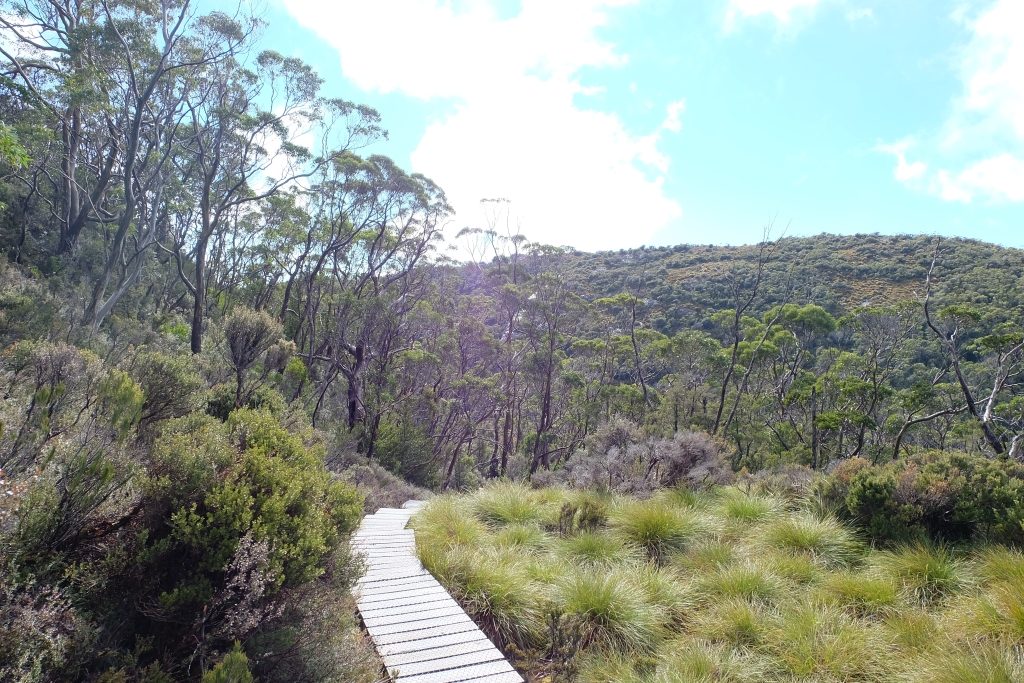
Firstly, this experience was probably one of the first hikes that made me cognisant of the incredible ecologically rich landscapes that Australia is fortunate to have. I had been too young and too naïve on previous adventures to fully comprehend the important role that conservation areas such as Cradle Mountain/Mt St Claire National Park play in preserving habitat for species. Today, the impact humans are having upon the planet is potentially bringing around what has been termed ‘the sixth mass extinction’. While we are yet to find new and less destructive means of cohabiting with other species on this planet, conservation parks provide invaluable sites to preserve biodiversity – at least some of it.
Secondly, this was perhaps the first time I realised how necessary it was to escape the hustle and bustle of everyday life and retreat into nature. The fresh air and serene silence of the area quietened my mind, while the need to focus during the ascent kept me present. Between the business of study, volunteering and work, I often find myself living in my own head and becoming detached from reality. I realise that I am privileged to be able to this at all, and not everyone has the ability to take time off from ‘life’ and seek respite in national parks. Perhaps we should be finding means of conserving more natural areas closer to all major cities and regions so that this becomes a more accessible possibility for everyone. The enjoyment of nature should not be for a privileged few, but should be the right of each person.

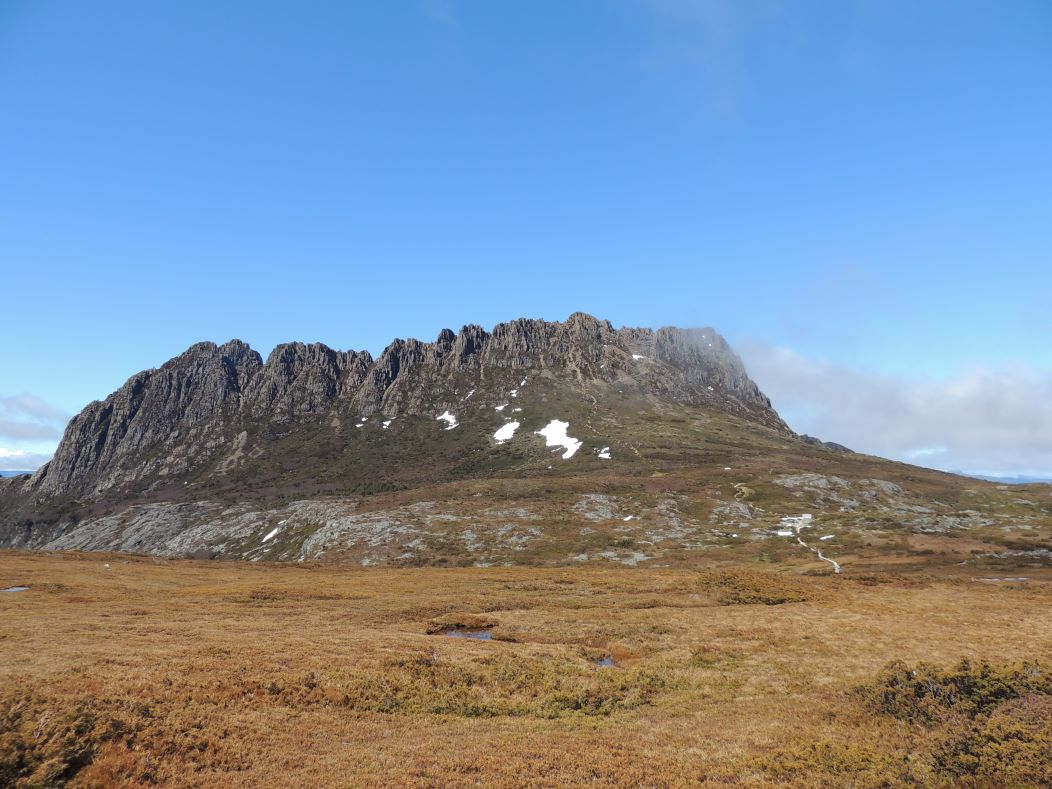
Leave a Reply